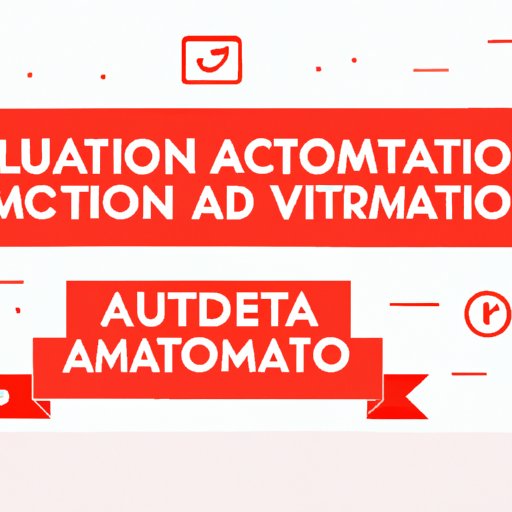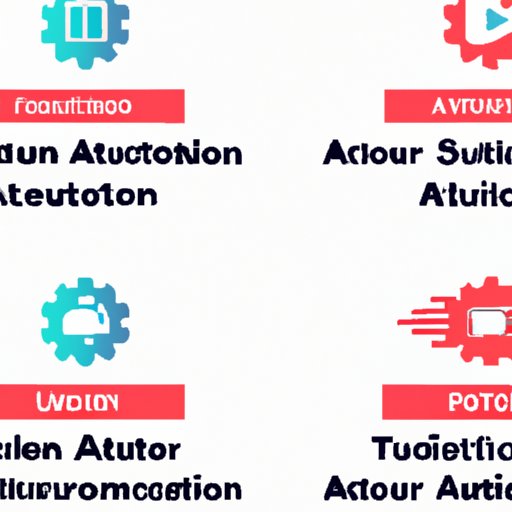YouTube Automation: A Comprehensive Guide for Content Creators
YouTube is a massive platform that attracts millions of viewers every day. Content creators who want to make a living on the platform need to produce high-quality videos consistently to keep their viewership engaged and grow their subscriber base. However, creating videos from scratch is time-consuming, and the pressure to churn out top-notch content can be overwhelming. That’s where YouTube automation comes into play.
YouTube automation refers to the use of software and tools to automate various tasks involved in video production, publishing, and promotion. By leveraging the power of automation, content creators can produce videos faster, consistently, and at scale, without compromising on quality.

The Pros and Cons of YouTube Automation: A Complete Guide for Content Creators
Like any other technology, YouTube automation has its advantages and disadvantages. Here is a complete guide to help content creators understand the pros and cons of YouTube automation:
Benefits of Automation
- Faster video creation: Automation tools can help content creators produce videos much faster than the manual process, especially for repetitive tasks like video editing and thumbnail creation.
- Consistency: Automation ensures that videos have a consistent look, feel, and branding, making it easier for viewers to recognize and connect with the channel.
- Scalability: Automation can help content creators scale their output, allowing them to produce more videos and engage with a broader audience.
- Audience engagement: Automation tools can help content creators optimize their videos for better viewer engagement, including captions, tags, and descriptions.
- Increased revenue: By producing more videos faster, and optimizing them for better engagement, content creators can increase their revenue potential through ad revenue, sponsorships, and other monetization channels.
- Loss of creativity: Automation can lead to a loss of creativity and authenticity, which can be a turn-off for viewers who are looking for unique and original content.
- Cost: Automation tools can be expensive and may not be affordable for all content creators, especially those starting on a tight budget.
- Technical difficulties: Automation tools can be complex and require technical expertise to use, which may not be feasible for all content creators.
- Video editing: Automation tools can help content creators edit videos faster and more efficiently than through manual editing.
- Transcription: Captions can be autogenerated using speech recognition tools, saving content creators time and effort.
- Subtitling: Automation tools can help content creators add subtitles to their videos quickly and accurately, improving accessibility and engagement.
- Thumbnail creation: Automation tools can help content creators design engaging and eye-catching thumbnails for their videos.
- Analytics tracking: Automation tools can help content creators track video performance and make data-driven decisions to optimize their content.
Potential Drawbacks of Automation
How to Strike a Balance between Manual and Automated Processes
The key to successful YouTube automation is to strike a balance between manual and automated processes. Content creators should use automation tools to streamline repetitive tasks and optimize video performance, while using their creative skills to add a personal touch to the videos. This can help create a unique brand identity that resonates with the audience while taking advantage of the benefits of automation.
Maximizing Efficiency: How YouTube Automation Can Save You Time and Effort
YouTube automation tools can help content creators streamline various tasks involved in video creation, publishing, and optimization. Here are some examples of tasks that can be automated:
Real-world case studies have shown that YouTube automation can help content creators improve their workflow and output. For example, popular YouTuber Peter McKinnon uses various automation tools to streamline his video production, including video editing software, stock footage libraries, and music libraries. According to McKinnon, automation helps him remain productive and creative while managing his busy schedule.
The Top 5 Tools for YouTube Automation: Make Your Channel Stand Out
There are numerous automation tools available to content creators who want to streamline their video production process. Here is an overview of the most popular and effective tools:
1. TubeBuddy
Tubebuddy is a browser extension that helps content creators optimize their YouTube channel, including keyword research, SEO, and analytics tracking. It also offers features such as automated video publishing and scheduling, A/B testing, and social media integration.
2. VidIQ
VidIQ is another browser extension that helps content creators optimize their YouTube videos. It offers features such as keyword research, competitor analysis, and analytics tracking. It also offers video promotion tools such as end screens and call-to-action overlays.
3. PlaceIt
PlaceIt is a web-based tool that allows content creators to create professional-looking video thumbnails, intros, and outros without any design skills required. It offers a vast library of templates and customization options.
4. Lightworks
Lightworks is a video editing software that offers professional-grade features such as multi-cam editing, color correction, and audio mixing. It is available for Windows, Mac, and Linux.
5. Rev
Rev is an online transcription and captioning service that offers quick and accurate captions and transcriptions for videos. It also offers translation services with various language options.
When selecting automation tools, content creators should consider factors such as features, user-friendliness, pricing, compatibility, and support. They should also assess their needs and goals for their channel and choose tools that best match those needs and goals.
Why You Should Consider YouTube Automation for Your Business: Expert Insights
Several YouTube gurus, digital marketers, and business owners have shared their perspectives on the benefits of YouTube automation for brand building and customer engagement. For example, Neil Patel, a digital marketing expert, recommends using automation tools to optimize videos for SEO and improve engagement and watch time. Pat Flynn, a successful online entrepreneur, also uses automation to streamline his video production and improve his workflow.
Many successful YouTubers have also monetized their channels using automation. For example, video creator Roberto Blake uses TubeBuddy to improve his SEO and optimize his video titles, tags, and descriptions. According to Blake, this has helped him increase his video views and grow his channel.
Content creators should tailor their automation approach to their niche, industry, and audience. By selecting the right automation tools and techniques, content creators can improve their video production process and enhance viewer engagement, leading to more revenue and growth potential.
YouTube Automation 101: How to Get Started with Automated Video Creation
For content creators who are new to YouTube automation, here is a step-by-step guide on how to set up and use automation tools for YouTube videos:
Pre-production
The pre-production phase involves planning and research. This includes conducting keyword research, developing video ideas and scripts, and creating storyboards and shot lists. Tools like TubeBuddy and VidIQ can help with keyword research and SEO optimization.
Production
The production phase involves recording, editing, and publishing videos. Content creators can use automation tools like Lightworks for video editing and PlaceIt for thumbnail creation. For captioning and transcription, Rev can be a valuable tool. Automated scheduling and publishing features are available in TubeBuddy.
Post-production
The post-production phase involves promoting and optimizing videos. Content creators can use automation tools like TubeBuddy and VidIQ for promotion and tracking. Analytics tracking is also offered at an impressive level with these tools. At this stage, a content creator focuses on identifying what worked well and what could be improved for creating better content.
Content creators should also consider other promotional opportunities to increase their viewership, such as cross-promotion channels and sponsorship deals.
Is YouTube Automation the Future of Content Creation? Anticipating Trends and Innovations
Automation technology is continually evolving, and it’s likely that YouTube automation will be more sophisticated and widely available in the future. Industry predictions suggest that automation will play a critical role in shaping the future of content creation, marketing, and monetization. Content creators should, however, consider the ethical implications of automation technology and ensure that their videos maintain authenticity, creativity, and personal touch.
Conclusion
YouTube automation is a powerful tool that content creators can use to optimize their video production and grow their audience. While it has its advantages and disadvantages, content creators can strike a balance between automation and creativity by leveraging the right automation tools and techniques and using their creative skills to add a personal touch to their videos. With the right approach, content creators can take their YouTube channel to the next level and achieve their goals.
